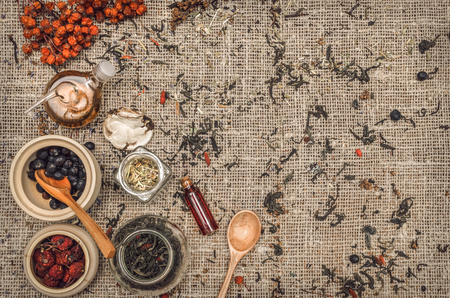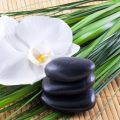Introduction: The Enduring Allure of British Herbalism
For centuries, herbal remedies have been woven into the very fabric of British life, shaping not only medical practices but also cultural identity. From soothing cups of chamomile tea to the aromatic sprigs of lavender placed beneath pillows, traditional botanicals continue to hold a special place in the hearts and homes of people across the UK. But what is it about these time-honoured remedies that has enabled them to persist through modernity, and how do they reflect uniquely British values? Today, despite advances in pharmaceutical science, many Britons still turn to herbal solutions—often passed down through generations—for comfort and care. Whether it’s elderflower cordial for colds or nettle tea for vitality, these practices are more than mere folklore; they represent a living connection to nature and community. As interest in natural health grows in the 21st century, understanding the science behind these classic British herbal remedies—and distinguishing fact from fiction—has never been more relevant. This article explores the deep roots of herbalism in the UK, its role within national identity, and why these traditions continue to resonate with modern Britons.
2. Iconic British Herbs: Tradition and Usage
Britain’s countryside is rich with herbs that have woven themselves into both the nation’s folklore and its daily health practices. Among the most iconic are nettle, elderflower, chamomile, and dandelion—each recognised for distinctive properties and a long history of use. Below is an overview of their folkloric reputations, traditional applications, and cultural symbolism:
| Herb | Folkloric Reputation | Traditional Uses | Historic Symbolism |
|---|---|---|---|
| Nettle | Believed to ward off evil and provide protection; associated with vitality in Celtic lore. | Infusions for joint discomfort and allergies; cooked as a spring tonic for nutrition. | Resilience, renewal, and purification. |
| Elderflower | Regarded as a protective plant; thought to keep away malevolent spirits. | Syrups for colds and flu; teas to soothe fevers. | Transformation and guardianship in rural traditions. |
| Chamomile | Known as the “plant’s physician”; believed to bring luck and calm. | Tisanes for digestion and relaxation; compresses for skin irritations. | Peace, restfulness, and healing. |
| Dandelion | Used in divination; seen as a symbol of hope due to its persistence. | Roots roasted as coffee substitute; leaves consumed for liver support. | Endurance, clarity, and spiritual growth. |
These herbs have been valued not only for their medicinal potential but also for their symbolic resonance within British culture. Folklore often elevated their status beyond mere remedies—nettle was hung above doorways, elderflower trees were never cut down without ceremony, chamomile lawns graced monastic gardens, and dandelions featured in childhood games. The following sections will assess how modern science measures up against these time-honoured beliefs.

3. Understanding the Science: What Research Shows
While British herbal remedies such as elderflower, chamomile, and nettle have centuries of tradition behind them, modern science is gradually unveiling which claims hold up under scrutiny. Recent clinical trials and meta-analyses provide a clearer picture of their potential health benefits and limitations.
Elderflower: Respiratory Relief or Myth?
Used historically for colds and flu, elderflower has been studied for its anti-inflammatory and antiviral properties. A 2020 systematic review in the British Journal of General Practice noted that while some laboratory studies show elderflower extracts may inhibit certain viruses, robust human clinical data remain limited. Thus, it is promising but not yet proven for respiratory infections.
Chamomile: Calming Claims Examined
Chamomile tea is synonymous with relaxation in British culture. Research published in Phytomedicine suggests that chamomile extract can modestly reduce anxiety symptoms in adults, though larger placebo-controlled trials are needed. Its use for digestive discomfort is supported by some small-scale studies, but evidence remains mixed regarding its efficacy over placebo.
Nettle: Anti-inflammatory Actions Under Review
Nettle has a longstanding reputation for alleviating joint pain and allergic reactions. According to a 2019 review in Evidence-Based Complementary and Alternative Medicine, nettle leaf shows anti-inflammatory effects in laboratory settings, with some early clinical evidence suggesting benefit for osteoarthritis symptoms. However, more rigorous trials are required before widespread medical endorsement.
Separating Evidence from Anecdote
The gap between folklore and fact persists largely due to the limited scale of many herbal remedy studies and variability in product quality. While anecdotal support for classic British herbs remains strong, current scientific research highlights the need for cautious optimism—some traditional uses are validated by emerging evidence, while others await confirmation through larger, high-quality trials.
4. Fact Versus Folklore: Debunking Myths
British herbal remedies are steeped in centuries-old traditions, but not every popular belief holds up to scientific scrutiny. In this section, we analyse some of the most common claims and distinguish between what is supported by evidence and what remains rooted in folklore. This critical approach provides clarity for those navigating the complex world of natural health solutions.
Common British Herbal Remedies: Tradition vs. Evidence
| Herb | Traditional Claim | Scientific Evidence |
|---|---|---|
| Elderflower (Sambucus nigra) | Treats colds and flu, promotes sweating | Some laboratory studies show antiviral properties, but robust human clinical trials are limited; efficacy largely anecdotal |
| Nettle (Urtica dioica) | Reduces inflammation and relieves joint pain | Moderate-quality evidence supports anti-inflammatory effects; may help with symptoms of osteoarthritis in some cases |
| Chamomile (Matricaria chamomilla) | Calms nerves and aids sleep | Supported by several small-scale studies indicating mild sedative effects; further research needed for conclusive results |
| Dandelion (Taraxacum officinale) | Cleanses the liver and supports digestion | Limited scientific backing; most benefits seen in animal studies, with human data lacking or inconclusive |
The Role of Placebo and Perception
A significant factor in the continued popularity of these remedies is the placebo effect. Many users report subjective improvements in wellbeing even when scientific evidence is weak. The cultural context—such as family traditions or regional folk wisdom—can enhance perceived effectiveness, making it difficult to separate psychological benefit from true pharmacological action.
Cultural Persistence vs. Clinical Proof
While some herbal remedies have shown promise under controlled conditions, others owe their reputation more to oral history than to robust clinical validation. It’s crucial for consumers to consider both the available evidence and their own health needs before adopting traditional herbs as part of a regimen. Consulting healthcare professionals can ensure that modern science complements, rather than contradicts, cherished British traditions.
5. Modern Application: Safe, Sensible Use in the UK
Today’s Britons are increasingly interested in complementing modern medicine with traditional herbal remedies, but navigating this landscape requires a careful, evidence-based approach. The integration of herbal products into daily health routines is not without its risks, particularly when these remedies interact with prescription medicines or are used without professional oversight. To help the public make informed choices, UK regulatory bodies such as the NHS and the Medicines and Healthcare products Regulatory Agency (MHRA) provide clear guidance on safe use.
Evidence-Based Decision-Making
Consumers are encouraged to seek reliable, scientific information before trying any herbal remedy. The NHS offers resources summarising current evidence for many classic British herbs, highlighting which claims are supported by robust clinical trials and which remain largely anecdotal. Consulting healthcare professionals—especially pharmacists or GPs—is recommended to ensure that herbal supplements do not interfere with prescribed treatments or existing health conditions.
Regulation and Quality Assurance
The MHRA plays a critical role in regulating herbal medicines sold in the UK. Products registered under the Traditional Herbal Registration (THR) scheme must meet certain safety and quality standards, although efficacy may not always be proven to the same degree as conventional pharmaceuticals. Shoppers should look for the THR logo on packaging as an assurance of regulatory scrutiny and relative safety.
Practical Guidance for Integration
For those wishing to incorporate herbal remedies responsibly, experts recommend starting with low doses, monitoring for adverse effects, and never substituting herbs for clinically necessary treatments. Open communication with healthcare providers about all supplements being taken is essential. Ultimately, while classic British herbs can form part of a holistic approach to wellbeing, their sensible use—grounded in science and regulated practice—remains key to realising potential benefits while minimising risks.
6. Conclusion: Embracing Heritage with a Rational Perspective
Classic British herbal remedies have woven their way through centuries of tradition, leaving an indelible mark on the nation’s cultural heritage. As we have explored, some remedies—such as elderberry for colds or chamomile for relaxation—are supported by emerging scientific evidence, while others remain rooted largely in folklore. This blend of history and science highlights the unique position that British herbalism occupies in modern wellness culture.
Balancing respect for cultural traditions with a commitment to evidence-based health is essential. While embracing the rich stories and rituals surrounding these herbs can be meaningful, it is equally important to scrutinise claims through the lens of modern research. Not all traditional remedies will meet today’s scientific standards, but dismissing them entirely overlooks their role in both heritage and wellbeing.
If you are interested in exploring British herbalism responsibly, consider starting with well-documented herbs whose safety profiles are established—such as peppermint, nettle, or dandelion. Consult reputable sources, such as NHS guidance or academic reviews, and seek advice from qualified herbalists who adhere to professional standards. Always approach new remedies cautiously, particularly if you have underlying health conditions or take prescription medications.
Ultimately, the most rewarding path lies in combining curiosity about the past with a rational assessment of current knowledge. By doing so, we honour Britain’s herbal legacy while safeguarding our health—a balance that ensures these time-honoured practices remain both relevant and safe for generations to come.


